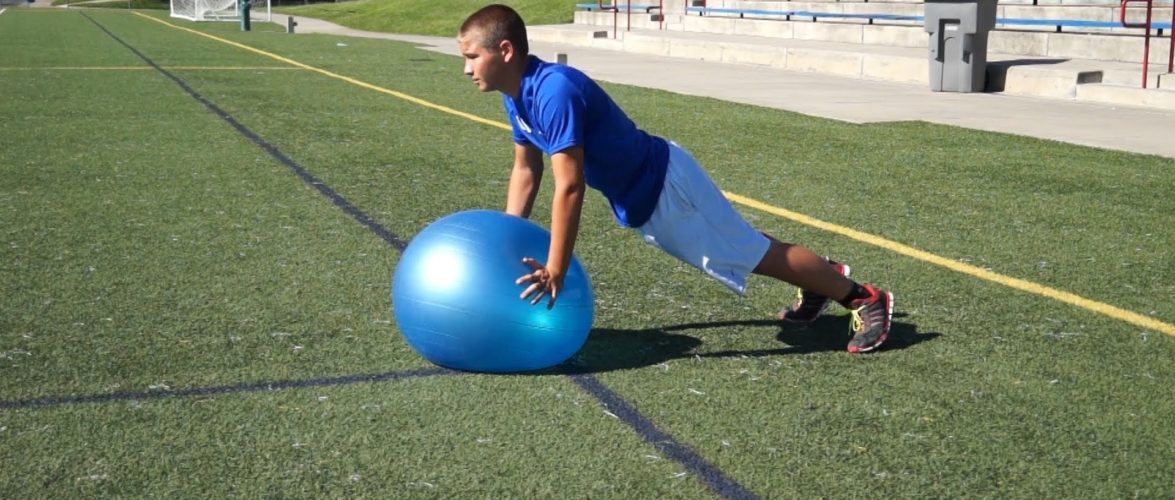This article is aimed at the wider NPL and State League footballing community who are looking for the opportunity to enhance the performance of players and improve the professionalism of football clubs. This can be done through building partnerships with allied health professionals who will initiate and monitor the development of relevant practices to improve overall performance and reduce injury incidence rates.
There are two groups I want to focus on in the article which essentially are heavily reliant on one another:
- Developing footballers from ages 10-18 years – Those who require the foundations of strength and conditioning, education about physiology/anatomy, performance and recovery, to improve their physical and cognitive functioning throughout their adolescent years. This will facilitate better on-field performance and lower injury prevalence in senior years.
- Senior footballers ages 19+ years – Those who require specialised S&C programs that are periodically structured to the stages of a competitive season. These are designed to help maintain/improve performance and correct imbalances which will reduce the level and frequency of injury to a player.
Competing in the NPL for over eight years, and working with footballers over the past four years as an exercise physiologist, it is clear that we need to improve our development and player management systems if we are to improve the overall dynamics of a footballer. I understand there are various reasons as to why clubs and individuals are not taking advantage of strength and conditioning environments. I am able to help steer clubs in the right direction to overcome these barriers and create a distinct advantage for the playing group.
Firstly, many clubs do not have the luxury or financial backing to fund programs for their teams, but this can be easily rectified by having an affiliation/partnership with an organisation to at least create a pathway where developing players have the option to utilise a practitioners skills to help with their performance.
Secondly, there is a lack of awareness of the importance of S&C training for developing footballers, which is detrimental to their long-term success. In the simplest way possible, if you are not training off the pitch to perform well on the pitch, you are on a path to injuries and hindered performance. The brain’s ability to execute finely tuned motor patterns and assess the body’s movements accurately is achieved through repetitive bouts of specific training to challenge your body and mind. You need stable joints, strong muscles, ligaments, tendons, and efficient motor patterns to withstand the loading of typical game-related stimulus. Deficiencies are harder to correct in later years, and often enough you are reactive in trying to stay on top of injuries rather than being proactive and preventing these from occurring in the first place.
Thirdly, parents may not know where to take their child for strength and conditioning as they are flooded with various options from people, social media, etc. This can provide conflicting information about where, what and how to train safely. Confusion can lead to practices that can be detrimental to a child’s development.
Outsourcing S&C needs to be introduced throughout a typical year not for 3-4 months per year, and secondly, these services need to be provided to young growing footballers who, if provided with these platforms, will progress into a more optimal functioning athlete as they transition through our development system.
To ultimately manage a footballer’s health and well-being, we need to understand that humans are not a linear machine, meaning many factors come together to result in an output. Physical and psychological health are two main pillars in moulding a young footballer. Benchmark football clubs of the world such as the Ajax have strength and conditioning programs, wellness interventions, education about performance/nutrition and recovery methods, where ‘student athlete’ is their methodology to growth. These systems are in all their scholarship programs, coupled with their training schedules, and unfortunately we do not have anything to compare to this. Before footballers even reach adolescence in this country they are already a long way behind these finely tuned youth players overseas, yet we want to compete with them on a global scale.
Strength and conditioning can help achieve optimal functioning of these developing bodies. Resistance training (strength) to improve muscle mass/tone, control/proprioception, stable joints/ligaments/tendons, and fine-tuned motor cognition in the brain are just some of these areas which will greatly benefit a young player’s ability.
Victorian football clubs need to expose their juniors to the physiological mechanics of the human body through education and optimal training environments, and for most clubs this cannot be done directly through the club, so why not affiliate your child/team with professionals in the exercise science industry who can help them develop in these vital areas of growth and learning, which will ultimately assist their development and overall club success?
“During 2017 the biggest change we made was employing someone for the role of S&C, previously I had done this myself however things go under the radar or don’t get followed up due to the reality of dealing with so many people and getting sidetracked with other injuries. By using someone qualified such as exercise physiologists, I have found I can delegate with more confidence and focus on treatment, knowing the exercise and rehab was taken care of.” James Telford – physiotherapist at Heidelberg FC and director of HPC Physiotherapy.
Football and science has been intertwined in today’s footballing era, where evidence-based research and exercise interventions are proving to be the difference for athletes to perform at their highest functional capacity.
“Exercise Professionals have made a large impact on the NPL with injury rates dropping and performance increasing, the involvement of different practitioners will further lift the bar and bridge the gap between NPL and A-league training environments.” John Kobiela- S&C/remedial therapist at South Melbourne FC and director of Bodytune Health Management.
Ultimately the more allied health practitioners of different modalities managing a footballer’s growth and development, the better they will perform long-term. Walking Tall Exercise Physiology are excited to work with athletes (10+ years old) looking for football specific strength and conditioning services. I highly recommend you get your child involved with a professional in this industry to help provide young players with the tools to achieving success.
Once we acknowledge and understand the complexity and importance of training outside the football pitch, we will begin to see drastically improved performance on the pitch and raise the standard of Australian Football.
For anyone wishing to utilise Walking Tall’s Services (studio in Malvern) contact:
Evan Christodoulou – Exercise physiologist and director of Walking Tall Exercise Physiology
evan@walkingtallep.com / 0423923585

